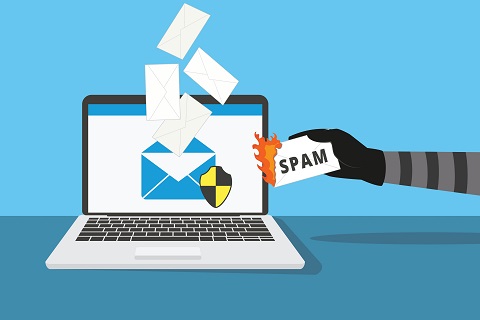Prevent Your Emails Being Marked as Spam
This subject came up recently in one of our Marketing Workshops and we realized there is a lot of confusion about SPAM in the small business community.
We all seem to have a general idea that SPAM is BAD but don’t really understand the ins and outs. What is it exactly? What are the rules? When is it ok to email someone and when is it not?
What the heck is all this fuss about SPAM anyway?
We all get tons of emails every day. And too many of them are unsolicited and annoying, right? Well without the CAN-SPAM Act there would probably be hundred more. The Act was established to protect consumers from deceptive email practices and bombardment of junk email. It’s a “law that sets the rules for commercial email, establishes requirements for commercial messages, gives recipients the right to have you stop emailing them, and spells out tough penalties for violations” (source: CAN SPAM Act). So what the heck does this really mean? It means if you want to email someone to promote your company in any way… whether you’re selling to them directly in the email or not – you must follow the CAN-SPAM rules.
But we’re just a tiny company; our emails don’t fall under this Act do they?
YES, they do!
Here is what the Act says is covered under the law: “all commercial messages, which the law defines as “any electronic mail message the primary purpose of which is the commercial advertisement or promotion of a commercial product or service,” including email that promotes content on commercial websites. The law makes no exception for business-to-business email. That means all email – for example, a message to former customers announcing a new product line – must comply with the law.”
SPAM is ANY unsolicited email that is intended to promote your business, product or service– the bottom line is don’t email people who haven’t given you permission. Yes, you can send them one email asking if they want to be on your mailing list – but a phone call is better.
Ok, so how do we avoid being labeled a SPAMMER?
Don’t use false or misleading header information.
Your “From,” “To,” “Reply-To,” and routing information – including the originating domain name and email address – must be accurate and identify the person or business who initiated the message.
Don’t use deceptive subject lines.
The subject line must accurately reflect the content of the message.
Identify the message as an ad.
The law gives you a lot of leeway in how to do this, but you must disclose clearly and conspicuously that your message is an advertisement.
Tell recipients where you’re located.
Your message must include your valid physical postal address. This can be your current street address, a post office box you’ve registered with the U.S. Postal Service, or a private mailbox you’ve registered with a commercial mail receiving agency established under Postal Service regulations.
Tell recipients how to opt out of receiving future email from you.
Your message must include a clear and conspicuous explanation of how the recipient can opt out of getting email from you in the future. Craft the notice in a way that’s easy for an ordinary person to recognize, read, and understand. Creative use of type size, color, and location can improve clarity. Give a return email address or another easy Internet-based way to allow people to communicate their choice to you. You may create a menu to allow a recipient to opt out of certain types of messages, but you must include the option to stop all commercial messages from you. Make sure your spam filter doesn’t block these opt-out requests.
Honor opt-out requests promptly.
Any opt-out mechanism you offer must be able to process opt-out requests for at least 30 days after you send your message. You must honor a recipient’s opt-out request within 10 business days. You can’t charge a fee, require the recipient to give you any personally identifying information beyond an email address, or make the recipient take any step other than sending a reply email or visiting a single page on an Internet website as a condition for honoring an opt-out request. Once people have told you they don’t want to receive more messages from you, you can’t sell or transfer their email addresses, even in the form of a mailing list. The only exception is that you may transfer the addresses to a company you’ve hired to help you comply with the CAN-SPAM Act.
Monitor what others are doing on your behalf.
The law makes clear that even if you hire another company to handle your email marketing, you can’t contract away your legal responsibility to comply with the law. Both the company whose product is promoted in the message and the company that actually sends the message may be held legally responsible.
And finally, SPAM is not just a suggestion – it’s the LAW! – And there are fines for violators!
Besides all this formal stuff – sending emails to people who don’t ask for them is just plain rude. Why would you want to start off a relationship making someone mad at you? It’s very simple to ask, “hey we send out weekly marketing tips, would you like to receive them?” People usually say yes, but we also tell them if they don’t like it they can easily opt out… No harm, no foul.
Manage your email and marketing replies in Oases Online. Move your customers from prospect to customer seamlessly and start invoicing and scheduling sessions. Book a demonstration below.
Interested in Oases for your Tutoring Business?
Love it and want it now?
Create your Oases database!

